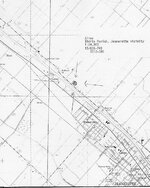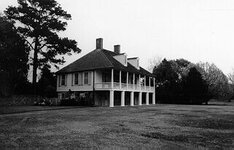Gypsy Heart
Gold Member
Gabriel Fuselier de la Claire's Buried Gold Silver and Jewels .....Louisianna
Gabriel Fuselier de la Claire was born August 27, 1722 in Lyon, France on the Rhone River, the son of Pierre Fuselier de la Claire and Ludivine Chaufeuraux. Pierre was captain of militia in Lyon.
Around 1800, the wealthy Gabriel Fuselier de la Claire built a plantation home at Grand Coteau. During the Civil War his grandson buried a fortune worth $500,000. Union troops burned the plantation and the cache was never recovered.
Gabriel, in textile business, came to Louisiana in 1748. His first wife was Jeanne Roman, (born circa 1743), daughter of Jacques Roman and Marie Josephe D'aigles. The couple had two children, Agricole (who was prominent in the founding of New Iberia) and Ludiovine.
Gabriel Fuselier de la Claire married his second wife, Helene Elsabeth Soileau, daughter of St. Noel Soileau and Marie Josephe Richaume. The couple had five sons and six daughters.
Gabriel Fuselier de la Claire, had been active in the Attakapas-Opelousas region a few years before local posts were established at either place. In 1760, for example, he purchased from local Indians a large tract of land in the Attakapas area, and was later to be appointed Commandant of Attakapas Post. On February 4, 1770, while still performing his duties, Fuselier was also named Commandant of Opelousas Post by Spanish Governor Alejandro O'Reilly." Opelousas: The History of a French and Spanish military Post in America, 1716-1803 by Winston DeVille.
Alice Plantation
Alice's builder, Agricole Fuselier de la Claire, was born in 1765 to Gabriel Fuselier de laClaire and Jeanne Roman. He married Christine Berard in 1786. A few months afterwards, Agricole acquired his first piece of property, a farm facing Bayou Tortue and backing on Bayou Cypress. This holding was enlarged in 1796 when Governor Carondelet granted him an additional 280 acres. Itwas here that Agricole and his wife established their first home. Meanwhile, Agricole acquired slaves, additional pieces of property in St. Martin Parish, and rose to the rank of lieutenant of militia.In January, 1804, he inaugurated a series of land purchases in the area of the lower Teche - soon tobe called St. Mary Parish. As the territorial period progressed, Agricole became a well-known andrespected planter, buying property on Bayou Vermilion and tracts of land in and around St.Martinville.
Agricole decided to move hisfamily to St. Mary Parish. That move took place sometime between August 1815 and January 1817.It was then that Alice was built.Agricole Fuselier lived twenty years in St. Mary Parish. Here he acquired additional land andmore slaves until his plantation was ranked as one of the leading sugar producers of the state.
Agricole Fuselier died on September 27, 1837 at the age of 72. His wife survived him by fiveyears. That he had been financially successful in life is attested to by the fact that his St. Maryholdings alone amounted to nearly one-half million dollars
Gabriel Fuselier de la Claire was born August 27, 1722 in Lyon, France on the Rhone River, the son of Pierre Fuselier de la Claire and Ludivine Chaufeuraux. Pierre was captain of militia in Lyon.
Around 1800, the wealthy Gabriel Fuselier de la Claire built a plantation home at Grand Coteau. During the Civil War his grandson buried a fortune worth $500,000. Union troops burned the plantation and the cache was never recovered.
Gabriel, in textile business, came to Louisiana in 1748. His first wife was Jeanne Roman, (born circa 1743), daughter of Jacques Roman and Marie Josephe D'aigles. The couple had two children, Agricole (who was prominent in the founding of New Iberia) and Ludiovine.
Gabriel Fuselier de la Claire married his second wife, Helene Elsabeth Soileau, daughter of St. Noel Soileau and Marie Josephe Richaume. The couple had five sons and six daughters.
Gabriel Fuselier de la Claire, had been active in the Attakapas-Opelousas region a few years before local posts were established at either place. In 1760, for example, he purchased from local Indians a large tract of land in the Attakapas area, and was later to be appointed Commandant of Attakapas Post. On February 4, 1770, while still performing his duties, Fuselier was also named Commandant of Opelousas Post by Spanish Governor Alejandro O'Reilly." Opelousas: The History of a French and Spanish military Post in America, 1716-1803 by Winston DeVille.
Alice Plantation
Alice's builder, Agricole Fuselier de la Claire, was born in 1765 to Gabriel Fuselier de laClaire and Jeanne Roman. He married Christine Berard in 1786. A few months afterwards, Agricole acquired his first piece of property, a farm facing Bayou Tortue and backing on Bayou Cypress. This holding was enlarged in 1796 when Governor Carondelet granted him an additional 280 acres. Itwas here that Agricole and his wife established their first home. Meanwhile, Agricole acquired slaves, additional pieces of property in St. Martin Parish, and rose to the rank of lieutenant of militia.In January, 1804, he inaugurated a series of land purchases in the area of the lower Teche - soon tobe called St. Mary Parish. As the territorial period progressed, Agricole became a well-known andrespected planter, buying property on Bayou Vermilion and tracts of land in and around St.Martinville.
Agricole decided to move hisfamily to St. Mary Parish. That move took place sometime between August 1815 and January 1817.It was then that Alice was built.Agricole Fuselier lived twenty years in St. Mary Parish. Here he acquired additional land andmore slaves until his plantation was ranked as one of the leading sugar producers of the state.
Agricole Fuselier died on September 27, 1837 at the age of 72. His wife survived him by fiveyears. That he had been financially successful in life is attested to by the fact that his St. Maryholdings alone amounted to nearly one-half million dollars





